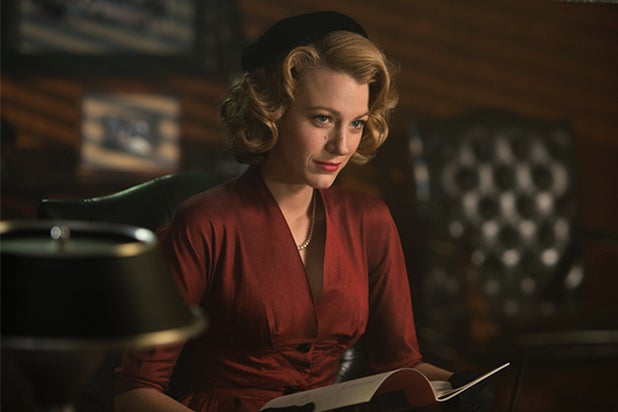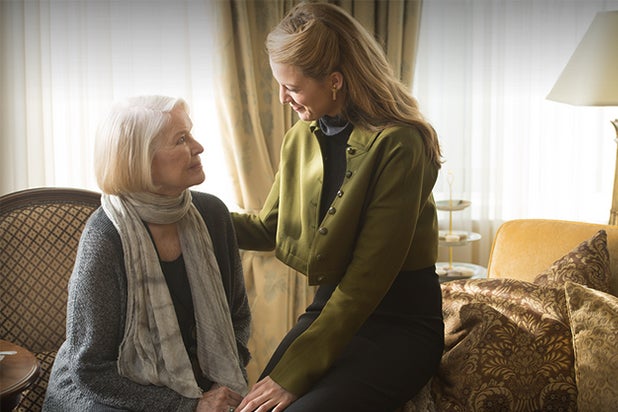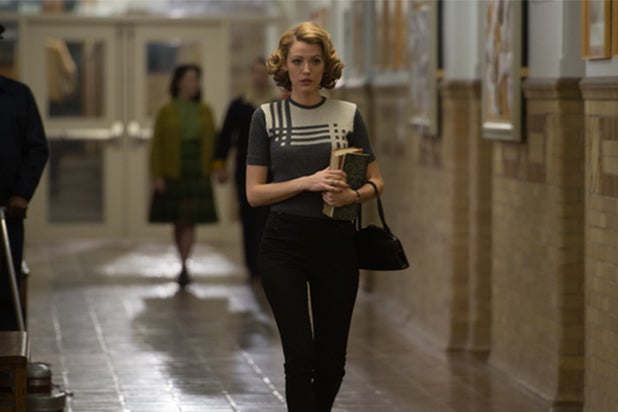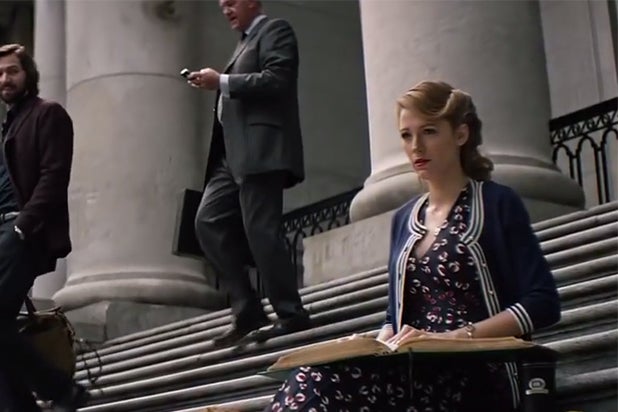You know you’ve got a problem when someone in your movie calls the protagonist “a cliché” and there’s no counterargument, ever, at any point in the film. Reed Morano’s “The Rhythm Section” takes well-worn genre material and removes all the substance and ingenuity, leaving behind only an undeveloped plot, a blank main character, and a sense of gravitas that is entirely unearned.
It hardly feels like a story. It’s as though a vague structure somehow got a mind of its own and wandered into cinemas without supervision.
Blake Lively plays Stephanie Patrick, a young woman who used to be one of the top two students at Oxford, but now she’s a drug-addicted sex worker, which is all the work that “The Rhythm Section” thinks is necessary to show she’s sad. Her family, an amorphous clutch of dialogue-free memory strands who apparently Stephanie only ever saw in two rooms in the same house, has been killed in a plane crash, which we also never see.
Watch Video: Blake Lively Trains With Jude Law in 'The Rhythm Section' Latest Trailer
One day, a reporter named Keith Proctor (Raza Jaffrey, “Lost in Space”) shows up at her brothel to tell her that the crash wasn’t an accident, and was instead the result of a terrorist bombing. What’s more, the bomber is living in her neighborhood. There’s no reason for him to tell her this: she never asked him about it, and he doesn’t need her to provide any useful information for his story. He just assumed she’d want to know, apparently.
Stephanie quickly quits her job, gets an information dump at his apartment, and tries to kill the bad guy only to discover that she just can’t do it and — whoops! — she tipped Proctor’s hand too early, so now he’s dead and the villain has escaped.
Also Read: 'The Rhythm Section' Arrives During Super Bowl Slump Weekend for Box Office
Stephanie’s only remaining lead is Proctor’s mysterious information source, whom she somehow predicts could train her to be an assassin, which seems like a stretch. But she’s right, somehow (what are the odds?), and soon she unearths a former MI6 agent named Iain Boyd, played by Jude Law, who has nothing better to do than train her to kill terrorists. The training includes a quick bout of jogging, followed by a rather chilly swim, followed by gun training where she learns to always, always shoot people twice. She eventually graduates by shooting someone once. (Never mind, I guess.)
Boyd and Stephanie’s plan is a head-scratching enterprise in which she impersonates a famous, recently-deceased assassin who looks vaguely like Stephanie, and gets hired by a man named Marc Serra (Sterling K. Brown) to kill people who were exclusively involved in the terrorist attack who killed her family. Which is quite a coincidence, since if she’d had to kill anybody else, it would have been really inconvenient for the film’s shaky morals. It might have even been interesting, which is not “The Rhythm Section”‘s modus operandi.
“The Rhythm Section” is a revenge movie in which all the elements that make sense have been strategically removed. The emotional core is empty because Stephanie’s loss is academic, never visceral, and her pain is illustrated by only condescending clichés about sex work. We don’t actually see Stephanie before the tragedy except in fleeting, silent snippets of her family making moon-eyes at each other. We are expected to assume that there’s a big contrast because “sex work” is trite movie code for “fallen woman.” And since we never see any element of the bombing that took her family away either, her grief is just a vague backstory, justifying the film’s action but never coming across as significant on a human level.
Also Read: Blake Lively's Hand Injury Halts Production on Spy Thriller 'The Rhythm Section'
The plot of “The Rhythm Section” is exceedingly simple, but you’d never know if from the dialogue. The scheme to blow up the airplane is described as a labyrinthine web of co-conspirators, but we never get a sense of who they are or what they really wanted. At one point Boyd tells Stephanie that the real culprit was an Islamic cleric, but when she asks follow-up questions about him, Boyd immediately adds that the cleric died off-screen so that’s unimportant now. And he’s right, since that plot point never comes up again. It’s one of many completely superfluous details that makes an otherwise straightforward storyline indistinct.
“The Rhythm Section” seems to be trying to take familiar movie conventions and reduce them to their original, base elements. But only the elements of plot remain. The idea of pain is introduced, but the sensation of it is completely absent. Blake Lively, an actor capable of injecting great depth and nuance into simplistic material like “The Shallows,” seems to have been instructed to play Stephanie as though tragedy has left her a blank slate, as opposed someone who’s driven enough to dedicate their whole life to revenge. Meanwhile, Jude Law seems to be playing a loose variation on his patronizing mentor figure from “Captain Marvel,” without any of the narrative developments or thematic underpinnings that make such a character interesting.
Filmed with harsh solemnity by cinematographer Sean Bobbitt (“Widows”), Morano’s film exists in a world of grey surfaces hit by chilly, low light or heavy blasts of sun. It’s a serious approach to visualizing a tale that’s hard to take seriously, and it sadly does little to elevate the material. The editing by Joan Sobel (“Nocturnal Animals”) has understandable trouble keeping the film’s awkward structure clear. “The Rhythm Section” opens with an attempted assassination, then cuts to eight months earlier, in the middle of Stephanie having a flashback to several years before that. There’s no opportunity to ground the audience from the moment, and the film never quite finds its footing from there on out.
There’s one double-espresso shot of energy that “The Rhythm Section” finds, halfway through the running time, when a hit goes bad and Stephanie finds herself in a chaotic car chase in Tangier. Morano (“I Think We’re Alone Now”) designs the sequence as though it were a single shot taken from the passenger seat of Stephanie’s car, as it careens haphazardly through crowded streets and caroms off enemy vehicles. For one brief moment, “The Rhythm Section” actually finds its rhythm and illustrates the harrowing, life-or-death intensity of exacting bloody revenge whilst being almost entirely inexperienced. If the whole movie had been as smartly developed and executed, “The Rhythm Section” might have been worth following.
Instead, Morano’s film never clicks into tempo. It’s a simple story made unnecessarily complicated by off-camera detail and an emotional narrative rendered moot by a bizarre lack of interest in human feeling. Even as a straightforward action movie exercise, “The Rhythm Section” stumbles; it seems like half the bodycount stems from Stephanie’s indecisiveness.
She’s not sure if she wants to get on a plane, and her family dies. She’s not sure she wants to go through with revenge, and a reporter dies. She’s not sure she wants to kill another terrorist, and the collateral damage skyrockets on two separate occasions. The whole movie is predicated on a hero being passionately motivated, but all the scenes within it rely on her having little or no wherewithal and everyone — including whatever interest the audience may once have had — dying as a result.
Entertainment - Latest - Google News
January 30, 2020
https://ift.tt/315jkRt
‘The Rhythm Section’ Film Review: Blake Lively Gets Stuck in a Thriller That’s Decidedly Off-Tempo - TheWrap
Entertainment - Latest - Google News
https://ift.tt/2RiDqlG
Shoes Man Tutorial
Pos News Update
Meme Update
Korean Entertainment News
Japan News Update
Bagikan Berita Ini






























0 Response to "‘The Rhythm Section’ Film Review: Blake Lively Gets Stuck in a Thriller That’s Decidedly Off-Tempo - TheWrap"
Post a Comment